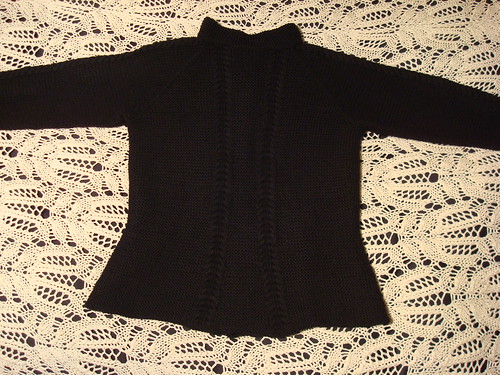
Here are the changes in more detail:
- I knitted size L, with 10 extra sts cast on under each arm, for a less tight fit under the arms (176 sts).
- I knitted the 176 sts to just under the bust, then started decreasing, 16 sts over 11 cm, which with my gauge was 4 sts on every 10th row, 2 in each side with 6 sts between decreases
- Then, I increased 4 sts (2 on each side) on every 4th row 6 times, then on every 7th row 3 times. I also increased 8 sts between the cables that run down the back, so they flare a bit away from each other (saved the sts for later).
- The sleeves are tapered, starting with 67 sts and decreasing to 47 sts by decreasing 2 sts on every 8th row. I finished with 4 rows of reverse stockinette, 12 rows of seed stitch, then cast off with knitting on the wrong side.
- Then, I picked up all the sts of each front and the bottom edge, and knitted 3 rows of reverse stockinette (2 sts increase once on each corner), then seed stitch button bands (8 rows each) on front and cast off like on sleeve cuffs.
The back, showing off the increases between cables, and on the sides:








